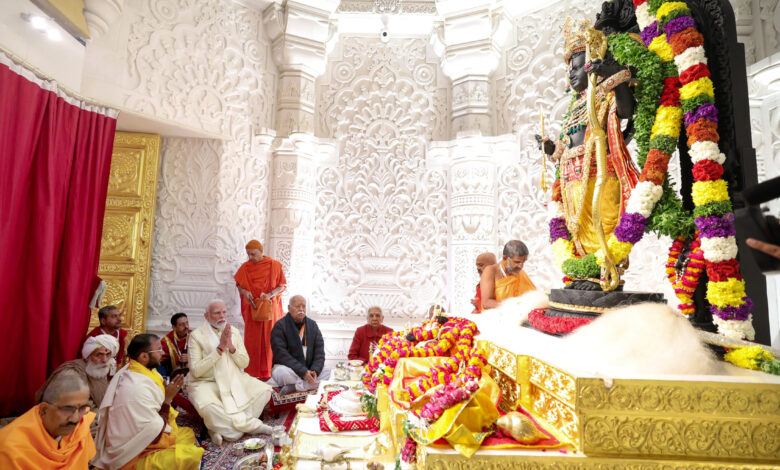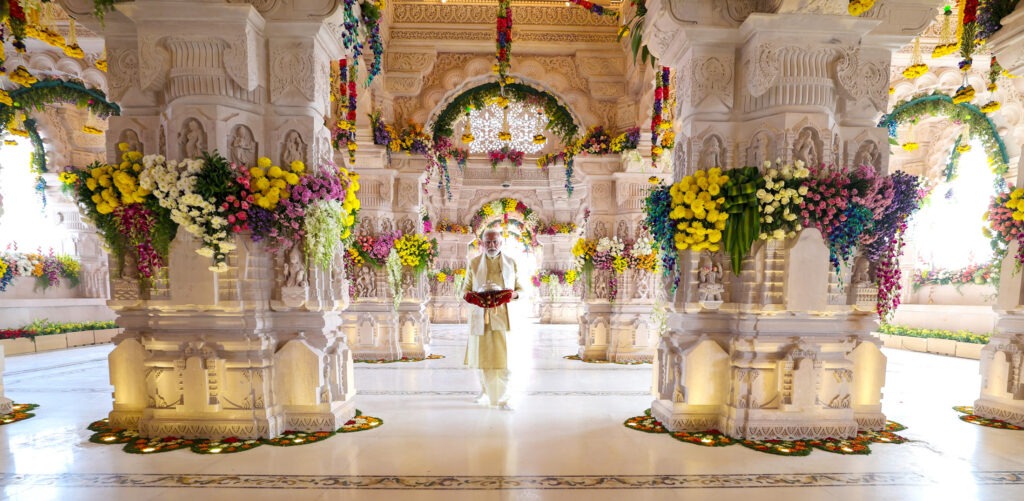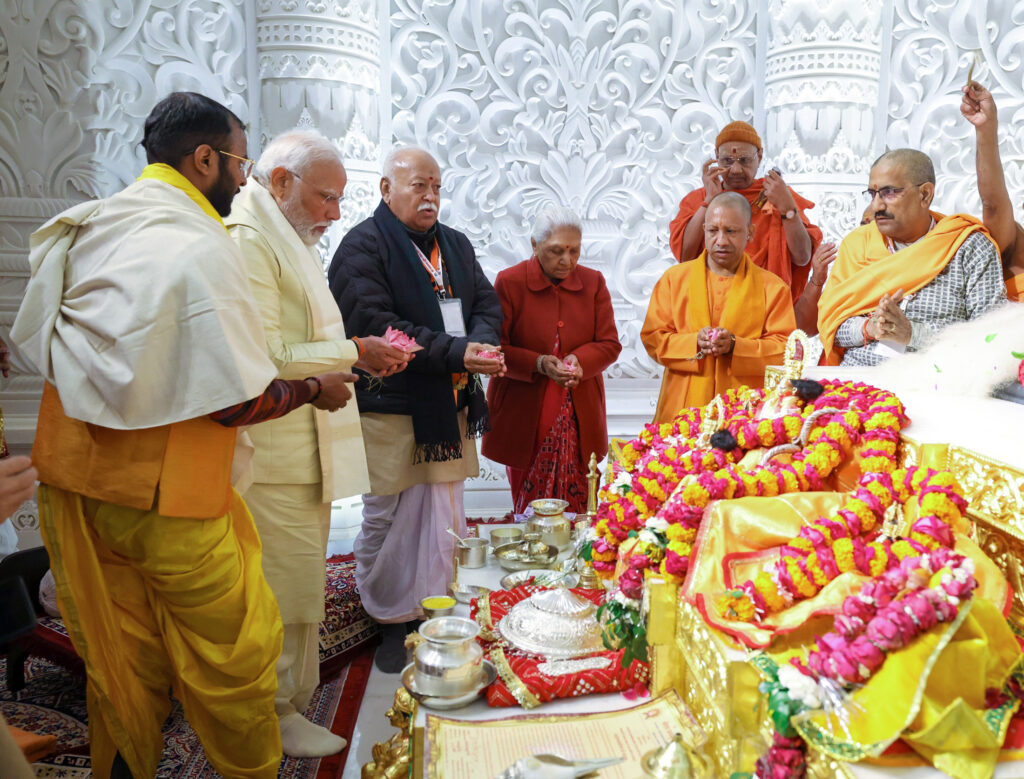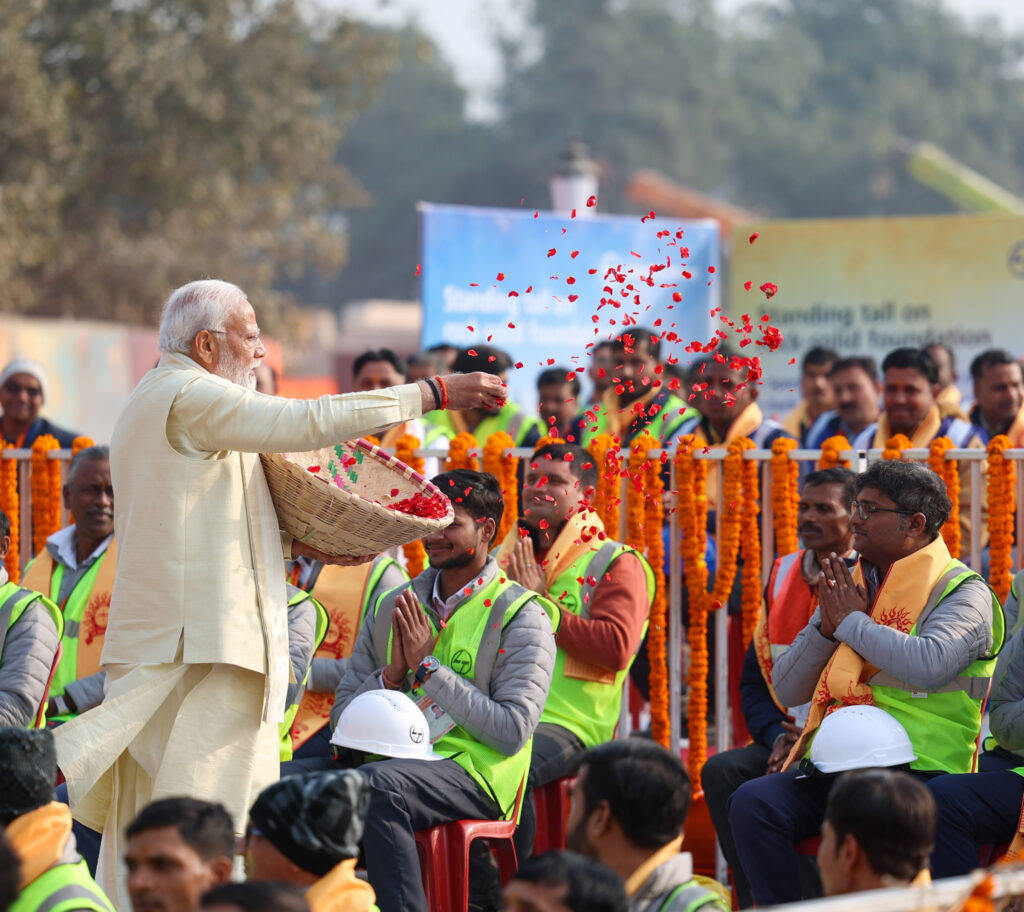Historic Pran Pratishtha Ceremony: Prime Minister Modi Inaugurates Shri Ram Janmbhoomi Mandir in Ayodhya
A Symbolic Culmination of Centuries: PM Modi Leads the Consecration of Lord Ram's Divine Idol, Signifying the Dawn of a New Era

Prime Minister Narendra Modi actively participated in the historic Pran Pratishtha ceremony of Shri Ramlalla at the newly constructed Shri Ram Janmbhoomi Mandir in Ayodhya, Uttar Pradesh. The ceremony marked a momentous occasion, symbolizing the culmination of centuries of patience, sacrifices, renunciation, and penance, as Lord Ram’s divine idol found its permanent abode.

During the ceremony, held on 22nd January 2024, Prime Minister Modi expressed profound sentiments, stating that this date is not merely a spot on the calendar but the initiation of a new ‘kaal chakra’ or time cycle. He conveyed gratitude to the Indian judiciary for upholding the dignity of justice, ensuring the just construction of the temple, and acknowledged the monumental efforts of all contributors, including the shramjeevi who played a crucial role in building the Shri Ram Janmbhoomi Mandir.

Reflecting on his 11-day fast and rituals, the Prime Minister shared that he attempted to visit places where Lord Ram had walked. From the sea to the Saryu river, the festive spirit of Ram’s name echoed everywhere, symbolizing the widespread celebration of Lord Ram’s presence across the nation.
Prime Minister Modi highlighted the infinite nature of Ram Katha and the eternal significance of Ramayan, emphasizing that the ideals, values, and teachings of Lord Ram remain constant and universal. He described the temple as a manifestation of national consciousness in the form of Ram, symbolizing India’s faith, foundation, idea, law, consciousness, thinking, prestige, and glory.
Expressing a profound connection with the changing cycle of time, Prime Minister Modi referred to the temple’s construction as a critical path chosen by the current generation. He called upon the nation to lay the foundation of India for the next one thousand years, expanding consciousness from the divine to the nation, from Ram to Rashtra.

The grand temple, according to the Prime Minister, serves as a witness to the rise of a magnificent India. He declared, “This is India’s time, and we are moving forward,” urging the citizens to embrace the responsibility of building a strong, capable, grand, and divine India.
The Pran Pratishtha ceremony was attended by representatives of major spiritual and religious sects, along with people from diverse backgrounds. The Shri Ram Janmbhoomi Mandir, constructed in traditional Nagara style, boasts impressive dimensions, supported by intricately sculpted pillars and walls depicting Hindu deities. The main sanctum sanctorum houses the idol of Shri Ramlalla, representing the childhood form of Lord Ram.
The Mandir complex includes five Mandaps, a historic well (Sita koop), and the restored ancient Mandir of Bhagwan Shiv at Kuber Tila. The foundation, constructed with roller-compacted concrete and granite, avoids the use of iron. The complex features essential facilities like a sewage treatment plant, water treatment plant, fire safety water supply, and an independent power station, embracing traditional and indigenous construction techniques.
The Pran Pratishtha ceremony signifies not only the consecration of Lord Ram’s idol but also the consecration of unwavering faith in Indian culture. It embodies human values and the highest ideals, contributing to the nation’s vision, philosophy, and direction. The Prime Minister concluded by expressing confidence that the impact of Lord Ram’s Pratishtha would be felt for thousands of years, solidifying the establishment of a capable and divine India.




